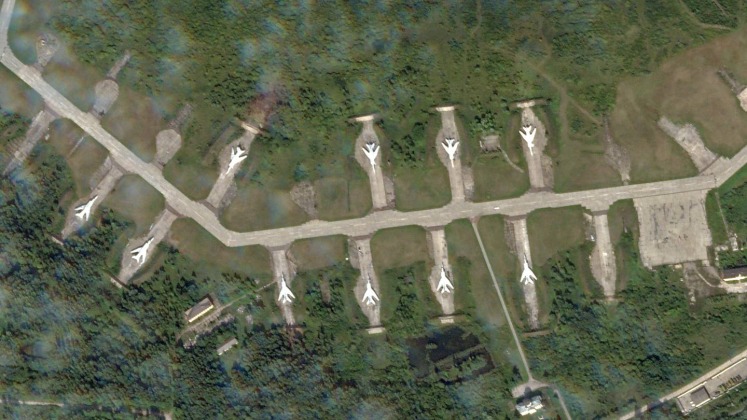News
Ukrainian Drone Strike Damages Russian Bomber at Airbase: Lost Strategic Depth Leaves Vital Assets Vulnerable
A strike deep into Russian territory by Ukrainian unmanned aircraft has damaged a Tu-22M strategic bomber at Soltsy-2 Airbase in Novgorod. The Russian Defence Ministry reported regarding the incident: “At around 10:00 Moscow time today, the Kiev regime carried out a terrorist attack using a copter type UAV against a military airfield in Novgorod region. The UAV was detected by the airfield’s observation outpost and was hit with small arms fire. As a result of the terrorist attack, a fire broke out in the airfield parking lot, which was promptly extinguished by firefighting teams. One airplane was damaged; there were no casualties as a result of the terrorist act.” Although the ministry report did not specify which aircraft had been hit, photos subsequently emerged showing a Tu-22M in flames and very possibly irreparably damaged. Public source satellite imagery subsequently confirmed this. The strike represents one of the most significant successes for Ukrainian drone operations in Russian territory, which have exploited the ability of very compact low speed aircraft to bypass the country’s air defences. New radar systems optimised to neutralising such threats have begun development specifically in response to the emergence of this threat. Drone attacks on Russian bomber bases are far from unprecedented, with a similar but unsuccessful strike notably having been launched against Engels Airbase in December – a facility which hosts the country’s Tu-160 intercontinental range strategic bombers.

Home to the 40th Composite Aviation Regiment which exclusively flies the Tu-22M, Soltsy-2 Airbase is one of very few facility is hosting Russian strategic bombers. The Tu-22M is a medium range aircraft optimised for tactical operations in Europe, the Middle East and East Asia, and have played a significant role in the Russian-Ukrainian War. Their primary role has been the launching of cruise missiles against key targets, including large numbers of Kh-22 missiles of which hundreds were inherited from the Soviet Union. Many of these missiles had come close to requiring decommissioning due to age, making them highly expendable assets. The Kh-22 is a primary armament for the Tu-22M, and was designed to be nearly impossible to intercept with a near hypersonic speed and irregular trajectory, although the missiles were designed for strikes on carrier groups which has reportedly limited their accuracy against targets on land. The Tu-22M was previously expected to be phased out of service and replaced by the Su-34M strike fighter, which has a similarly long reach but is considered much more cost effective to operate. The older bomber’s performance in the Syrian War, however, particularly for dropping very large quantities of unguided bombs against far away targets, reportedly played a key role in swaying the Defence Ministry to keep the class in service as no other aircraft were well suited to such operations.

Plans for modernisation of the medium range bomber fleet to the Tu-22M3 standard have face significant budget cuts, with the numbers in service having contracted to a fraction of their former size over the last two decades. With dozens of Tu-22M3s in storage as a result, however, this also means that replacing the destroyed aircraft is not expected to cause significant difficulties for the Russian Air Force. Likely much more concerning is the vulnerability of bases to potential future strikes, particularly in the event of a wider conflict with NATO where Ukraine could provide a key staging ground for attacks on key assets deeper into Russian territory. The strike on the bomber base thus serves as one of the most significant illustrators of the true potential consequences of Russia’s much diminished strategic depth since the disintegration of the Warsaw Pact and subsequently of the Soviet Union, with the shift of the frontlines from Germany to Ukraine allowing even relatively small enemy aircraft to strike a far greater range of sensitive targets. The United States by contrast, although at times seeing bomber units taken out of commission for extended periods due to accidents, has the benefit of much greater strategic depth leaving its bomber bases well out of range of similar kinds of attacks.












